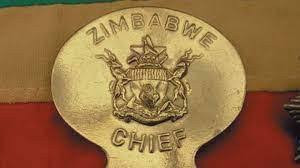BY HARRIET CHIKANDIWA
The United States government has flagged Zimbabwe as one of the 69 countries that failed to meet minimum fiscal transparency requirements (FTR) over the past two years.
However, the US government noted that Zimbabwe had since made some decent progress on the issue.
Fiscal transparency informs citizens about how government and tax revenues are spent and is a critical element of effective public financial management.
In the report titled Fiscal Transparency Report: Zimbabwe, released in September 2022, 72 countries met minimum requirements and 69 did not. Of the 69, the FTR identified 27 countries that made significant progress towards meeting the requirements.
The 2022 fiscal transparency review process evaluated whether governments publicly disclosed key budget documents, including expenditures broken down by ministry and revenues broken down by source and type.
Keep Reading
- Medical aid societies defend service charges
- Mystery buyer of diamonds outed
- Is the juice worth the squeeze?
- Zambia bails out starving Zim
The review process also evaluated whether government had a supreme audit institution that met international standards of independence and audited government annual financial statements, and whether such audits were made publicly available.
Public affairs officer at the US embassy Meg Riggs said Zimbabwe was one of the governments that did not meet the fiscal requirements.
Some of the requirements are budget documents, including the executive budget proposal, enacted budget and end-of-year report which should be widely and easily accessible to the public. Complete documents may be available from government offices or libraries, widely available government publications, or mass media channels.
Riggs said during the review period, the government made significant progress by ensuring actual revenues and expenditures reasonably corresponded with those in the enacted budget.
She said the Zimbabwean government also made its executive budget proposal, enacted budget, and end-of-year report publicly available online within a reasonable period. She added that information on some debt obligations was publicly available, including government guarantees of State-owned enterprise debts, but it did not publish total debt holdings by major State-owned enterprises.
“The government maintained significant off-budget accounts. Publicly available budget documents did not include a substantially complete picture of revenue and expenditures. The budget included aggregate allocations to, but not earnings from, State-owned enterprises. The intelligence budget was not part of the public budget, and there were no procedures in place to permit parliamentary review of it,” Riggs said.
“The supreme audit institution met international standards of independence but did not publish substantive reports within a reasonable period. The government specified in law or regulation but did not appear to follow in practice the criteria and procedures for awarding natural resource extraction contracts or licences. Basic information on mining concessions was not publicly available.”
Riggs, however, further noted that Zimbabwe’s fiscal transparency could be improved by publishing debt information of major State-owned enterprises.
She added that detailing allocations to, and revenues from State-owned enterprises in budget documents, following laws and regulations governing natural resource extraction contracting and licensing in practice, and making basic information about such awards publicly available could help Zimbabwe improve on its rankings.
- Follow Harriet on Twitter @harrietchikand1





